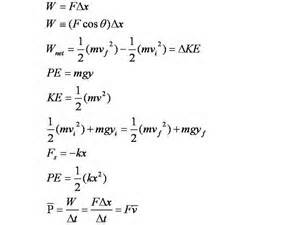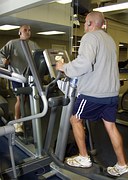Struggling with weight loss is difficult enough when you’re younger, and your body can work as it should. Add the element of aging to the mix, and you’ve got an uphill battle on your hands. Women experience difficulty losing weight after menopause and even during peri-menopause because not only are they dealing with typical issues such as slowing metabolisms, loss of muscle tone and declining aerobic capacity, but hormonal changes also contribute to abdominal weight gain, according to the Mayo Clinic.
Those issues working together explain why even women who have been active all their lives find losing weight during menopause challenging. The bad news is that experts agree that there is no “magic bullet” for managing menopausal and postmenopausal weight gain. However, there is some good news if you’ll choose to see the silver lining, and it is this: while losing weight during menopause is challenging, it’s not impossible. A study published in the Annals of Behavioral Medicine concluded that weight gain during peri- and postmenopause can be prevented, but the key is making long-term lifestyle changes. If you’re frustrated with having difficulty losing weight after menopause, committing to exercise and diet plans essentially for the rest of your life shouldn’t be a deal-breaker.
Calorie Needs for Healthy Weight Loss
Healthy weight loss doesn’t have to be about diet plans that cut out entire food groups or deprive you of an occasional treat. Even when menopause is an issue, how to lose weight is basically about burning more calories than you take it. However, everyone, regardless of age, requires a certain number of calories to exist, so the first step is to figure your personal number before you can start making adjustments to your diet and exercise.
Shape magazine recommends women use the Harris-Benedict equation to figure their base calorie needs, also called your Basal Metabolic Rate:
655+(4.35 x your weight in pounds)+(4.7 x your height in inches)-(4.7 x your age in years)=BMR
Using this equation, a 65 year old woman who weighs 130 pounds and is 5’3″ would have a daily need for roughly 1160 calories to maintain her weight, but that would only be if she literally did nothing each day but exist. Even those with sedentary lifestyles burn calories walking across the room, making the bed and doing other basic life activities. That means there’s still another part to the equation to come up with an accurate BMR. So! Multiply your BMR by 1.4 if you live a sedentary lifestyle, 1.5 if you regularly engage in moderate exercise, 1.6 if you have a physical job in addition to exercising and by 1.9 if you’re very active.
If our hypothetical woman does aerobics or Pilates several times a week plus walks her dog for an hour every day, she can multiply her BMR by 1.5 for a light activity factor to get 1740 calories. Remember, though, that is to maintain her weight of 130. If she’d like to lose a few pounds, she’ll need to reduce that by 500 calories a day to start losing one to two pounds each week. Alternatively, she’d only need to cut 250 calories from her required amount if she wanted to increase her activity each week.
Caveat: now that we’ve done all the math, there’s a critical variable to consider. The number you come up with is a general guideline. It’s average-based, meaning your personal metabolism and varying levels of activity week-to-week will affect how many calories you need at any given time. The best advice is to use the number you come up with as a starting point. Stick to it for a few days and pay attention to how you really feel physically. If you have a hard time taking in enough calories to meet your number, maybe you don’t need that many. On the other hand, if you feel sluggish and lack energy throughout the day (and you’re calories are coming from a healthy, balanced diet), then you may need more–or more of a specific food group like protein. The bottom line is to tailor calorie intake to your specific situation based on the numerous factors that uniquely make up you and your lifestyle.
Best Foods For Weight Loss in Menopause

Fruit is better than sugary sweets, but fruit contains sugar, too, so don’t overdo just because it’s “natural.”
The types of foods you eat will make a difference between continuing to struggle with losing weight during menopause or seeing quick weight loss results. Medical News Today recommends eating more fish, fruits and vegetables and cutting back (notice they didn’t say eliminate) fried foods, desserts, fatty meats and sugar-sweetened drinks. In fact, you’ll probably notice a difference just by cutting out soda and drinking more water.
A lot of the expert advice recommends substituting fruit for less healthy snacks and desserts, but remember that fruit contains sugars and, even though they’re natural, too much will still work against your weight loss plans. When you’re feeling snacky it’s usually not even related to being hungry. Try drinking a glass of water to ensure that it’s really not thirst you’re feeling. If you tend to nosh when bored, get up and get active instead of reaching for a bite to eat.
How to Lose Weight: Eating at the Right Times

Eating early — at least 4 hours before bedtime — will leave you plenty of time to burn off calories.
You might notice a surge of quick weight loss if you retrain yourself to eat at the right times. That means not skipping breakfast, and not eating right before bed. Actually, the longer you can go between your last meal of the day and bedtime, the better. If you’re planning on eating a heavy meal, like Thanksgiving dinner with all the trimmings, schedule it early, like around 4:00. The lighter the meal, the later you can eat it, but try to get in 4 or more hours between dinner and bedtime.
Get Physical

Participate in resistance training twice a week and get at least 150 minutes of cardio exercise, too, to help with weight loss during menopause.
All effective weight loss programs include exercise along with diet advice. The Centers for Disease Control have guidelines for optimal physical activity for people of all ages, and recommend that older adults, such as women in menopause, get a minimum of 150 minutes of moderate-intensity aerobic exercise each week along with two days of resistance training exercise. If you can double that, you’ll enjoy comparatively quick weight loss. Don’t worry about trying to carve out hours at a time for exercise. It’s been shown that people still see results from working out as little as 10 minutes at a time, just as long as the total at the end of the week adds up to 150 minutes or more.













